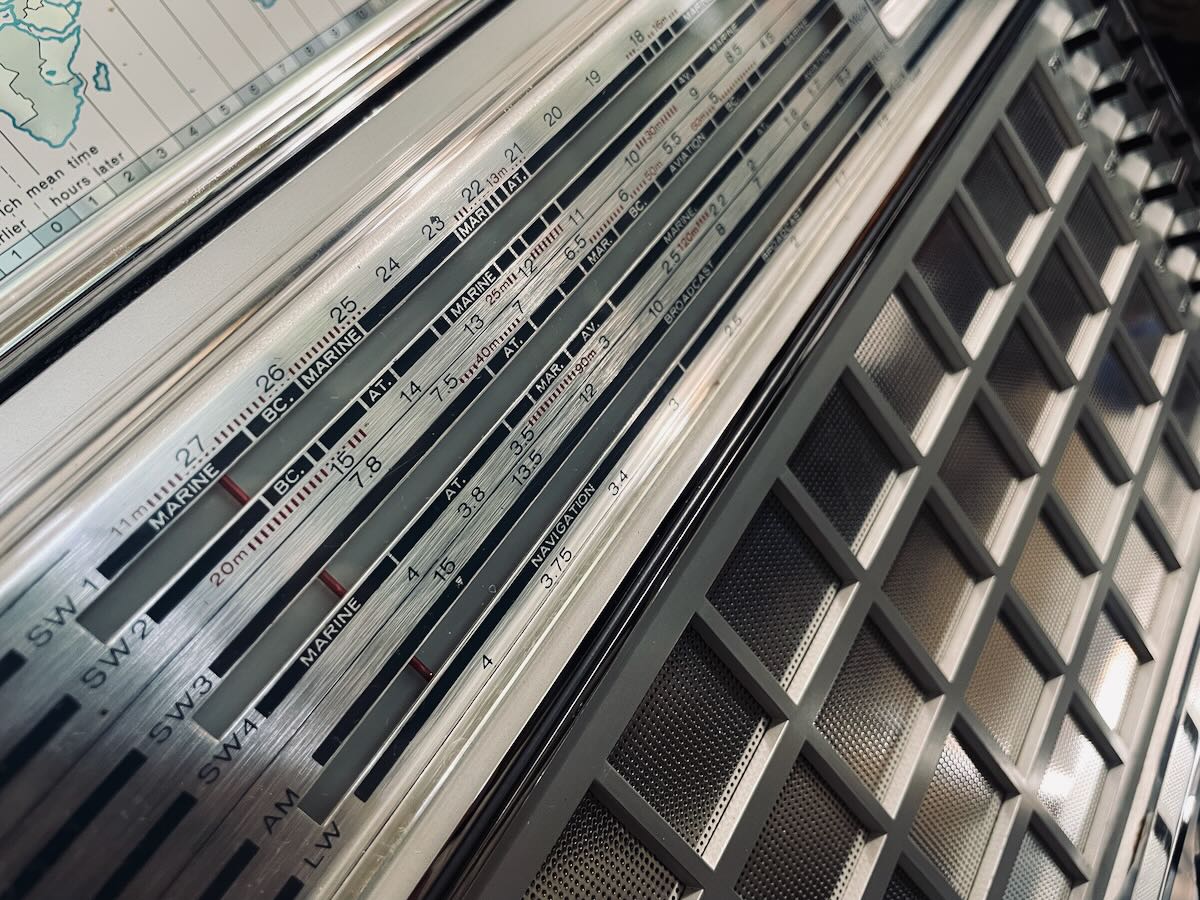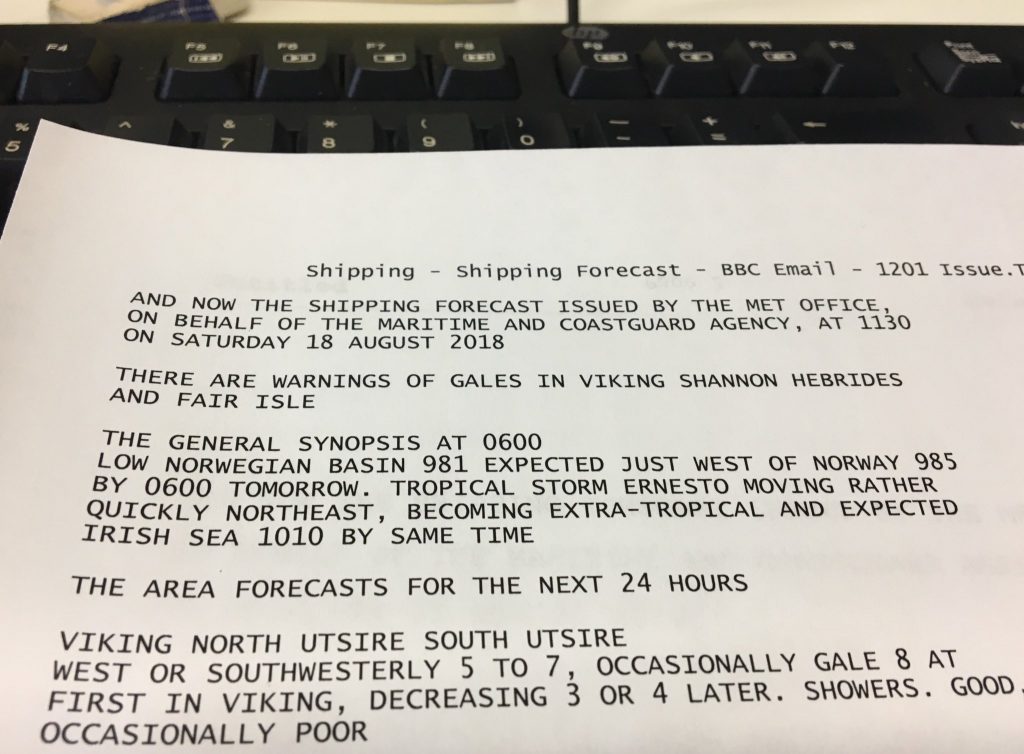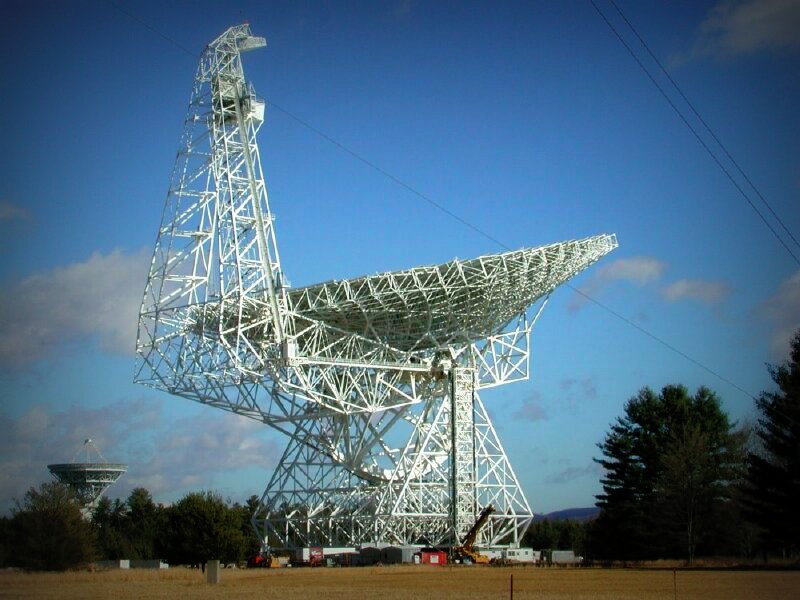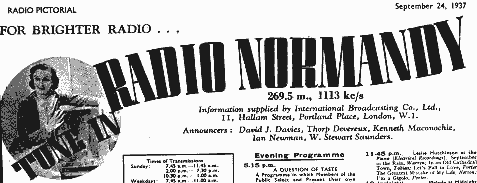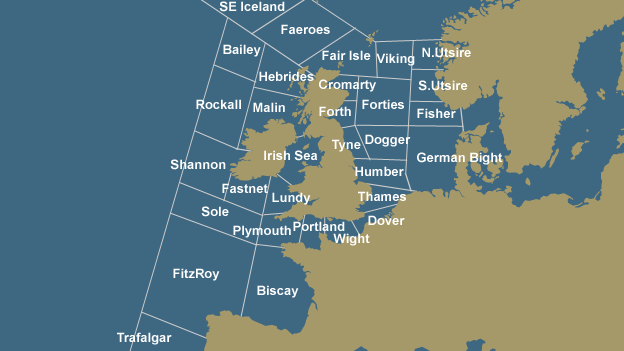 Many thanks to SWLing Post contributor Richard Cuff, who notes that Radio 4 is having a special all-day New Year’s program to celebrate the 100th anniversary of The Shipping Forecast.
Many thanks to SWLing Post contributor Richard Cuff, who notes that Radio 4 is having a special all-day New Year’s program to celebrate the 100th anniversary of The Shipping Forecast.
Tag Archives: Radio 4
BBC: “Do We Still Need the Pips?”
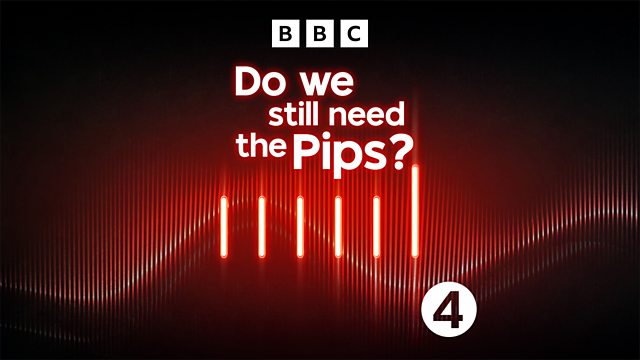 Many thanks to SWLing Post contributor, Richard Langley, who shares the following piece which recently aired on BBC Radio 4 (click link below to listen):
Many thanks to SWLing Post contributor, Richard Langley, who shares the following piece which recently aired on BBC Radio 4 (click link below to listen):
To mark the centenary of the Greenwich Time Signal on the BBC, Paddy O’Connell asks the unaskable – Do We Still Need the Pips?
First broadcast at 9.30pm on Feb the 5th 1924, the six pips of the Greenwich Time Signal have become synonymous with Radio 4.
But today digital broadcasting has rendered this time signal delayed and inaccurate. Plus their immovable presence can cause accidents on-air, and no-one wants to crash the Pips.
So after 100 years, should Radio 4 just get rid of them? What is the point of a time signal in 2024 anyway?
Paddy O’Connell looks back across a century of organised beeps, and meets the people who listen to, broadcast and sometimes crash in to the Pips to find out what we really think about these six little characters.
With interviews including Mishal Husain, Robin Ince & Brian Cox, Jane Steel, Richard Hoptroff, Jon Holmes and David Rooney.
Produced by Luke Doran.
Original music by Ed Carter.
Radio Waves: SIBC Receives New Generator, BBC Longwave Petition, HamClock Fun, and CBS Board Game Nostalgia
Radio Waves: Stories Making Waves in the World of Radio
Welcome to the SWLing Post’s Radio Waves, a collection of links to interesting stories making waves in the world of radio. Enjoy!
Many thanks to SWLing Post contributors Dennis Dura, Rick Murray, Uli Zehndbauer, and David Iurescia for the following tips:
New Zealand government hands over new standby generator to SIBC (SIBC)
The New Zealand government today handed over a standby generator to the Solomon Islands Broadcasting Corporation (SIBC).
The generator will ensure SIBC’s transmission and services via its medium and short wave frequencies remain operational even when there is a power outage.
Speaking at a brief handing over ceremony, New Zealand High Commissioner to Solomon Islands, His Excellency Jonathan Schwass said the donation marks another milestone in the partnership between New Zealand and SIBC.
He said it is important for SIBC to have an uninterruptible power supply during broadcasting.
“Given the power outage we are having at the moment, it is really important to have an uninterruptible power supply for SIBC broadcast.”
“That’s not just the matter of ensuring the listening pleasure of Solomon Islanders.”
“It is also a matter of guaranteeing the flow of essentials to the scattered Islands and the communities of this country especially in times of natural disasters and during crises like COVID-19,’’ Commissioner Schwass said. [Continue reading…]
Keep BBC Radio 4 Longwave (Change.org)
BBC Radio has been broadcasting on longwave for 89 years, covering most of the UK and northern Europe from a single transmitter in Droitwich. This radio frequency uniquely travels practically unimpeded across the country and provides a vital radio link in areas where reception of other signals and internet coverage is poor. Because only one transmitter is needed, the cost of providing this service is tiny. Not everyone is able to access digital or internet radio and longwave remains the most reliable way of receiving the BBC in any place at any time. It is also much better for the environment, as longwave receivers require far less power than digital radios, computers and mobile phones.
Recently, the BBC announced plans to end all longwave transmissions by 31st March 2024, just six months before the 90th anniversary of these transmissions beginning. We call upon the BBC to cancel these plans to scrap Radio 4 longwave, and to continue to provide this essential and historic radio lifeline for as long as possible.
Fun with the Clear Sky Institute HamClock (Nashua Area Radio Society)
I haven’t had the occasion to use any programming languages since retirement. That’s why the addition of a Raspberry Pi 4 Model B to the shack was a welcome change. I like to think of the Raspberry Pi as just another computer – one that uses a different operating system. With the Raspberry Pi, I can browse the Internet, access email, and write and run programs.
When I began to assemble a shack, I reserved a space on the wall for a 32? TV, Figure 1, which was purchased during a temporary rental stay. That TV has been unused for 3 years, but it was earmarked for a HamClock.
I searched the N1FD site to see if anyone had written about HamClock, but no articles were found. The first article for HamClock, written by Elwood Downey, WB0OEW, appeared in October 2017 QST[1]. In his article, he calls for the use of an Adafruit HUZZAH ESP8266 Wi-Fi system-on-chip. That device was fastened to the back of a 7? TFT display.
The version of HamClock that I built for use with the 32? HDTV employs the Raspberry Pi 4 Model B, Figure 2, with 2 GB memory[2]. The kit that I found on Amazon includes a 64 GB microSD card (with USB adapter) onto which the Raspberry Pi operating system had been preloaded. The kit also includes a plastic case with fan, little rubber feet, tiny screws to attach a camera, device heatsinks, a wall-wart power supply, a micro HDMI to HDMI cable, an instruction manual and various assembly instruction cards. The user has to provide their own USB mouse and keyboard. I already owned a wireless mouse and keyboard so I was able to use a single USB 2.0 port on the Pi for the wireless adapter.
If you already have a microSD memory card with USB adapter, power supply, mouse, keyboard and HDMI cable, you could get by with a Raspberry Pi Zero[3] at one-fourth the price. [Continue reading…]
CBS Board Game From the 1930s Highlights Golden Age of Radio (Radio World)
Hey radio history fans! Can any of you share a story behind this great find?
Steve Moravec, president of Phoenix Media Group in St. Paul, Minn., circulated this photo in his weekly “Monday Morning Memorabilia” email.
“This ’30s vintage board game promoted the radio stations of the Columbia Broadcasting System across the country,” he writes. “The goal seems to be to ‘touch ’em all’ with the game pieces, which appear uncut in the attachment.”
He found it on eBay; here’s the listing with more photos.
The early days of wireless, ship-to-shore and modern broadcast radio produced a number of radio board games. For example, online auction and history sites turn up “Listen In: The Great Wireless Game”; also “Radio Game,” published in 1920 by Milton Bradley (more pix here); and a “Radio Game for Little Folks,” from the mid-1920s. You can find photos of more on sites like Play Things of Past.[Continue reading…]
Do you enjoy the SWLing Post?
Please consider supporting us via Patreon or our Coffee Fund!
Your support makes articles like this one possible. Thank you!
An Exceptional Shipping Forecast
Yesterday, I took note of the following Twitter message and image (above) from Corrie Corfield, who is a Newsreader/Announcer for BBC Radio 4:
I’ve been reading the Ships on @BBCRadio4 for nearly 30 years & this is the first time I’ve had a TROPICAL storm. Becoming EXTRA tropical to boot ?#BraceYourselfForErnesto
I’ve been reading the Ships on @BBCRadio4 for nearly 30 years & this is the first time I’ve had a TROPICAL storm. Becoming EXTRA tropical to boot ?#BraceYourselfForErnesto pic.twitter.com/bbO7LPeEh9
— Corrie Corfield (@corrie_corfield) August 18, 2018
To listen to episodes of the shipping forecast via Radio 4 online, click here.
(Oddly, the one she notes seems to be missing!)
National Radio Quiet Zone featured in BBC Radio 4 series
Many thanks to SWLing Post reader, David Freeborough, who shares this brilliant, in-depth radio documentary featured on the BBC News and BBC Radio 4.
This BBC News Magazine article introduces the documentary:
“Anyone driving west from Washington DC towards the Allegheny Mountains will arrive before long in a vast area without mobile phone signals. This is the National Radio Quiet Zone – 13,000 square miles (34,000 sq km) of radio silence. What is it for and how long will it survive?
As we drive into the Allegheny Mountains the car radio fades to static. I glance at my mobile phone but the signal has disappeared.
Ahead of us a dazzling white saucer looms above the wooded terrain of West Virginia, getting bigger and bigger with every mile. It’s the planet’s largest land-based movable object – the Robert C Byrd Green Bank Telescope (GBT) – 2.3 acres in surface area, and taller than the Statue of Liberty.
But it needs electrical peace and quiet to do its job.”
The story continues on the BBC News site, but I would encourage you to listen to the five part radio documentary series on BBC Radio 4 first. Green Bank, WV, is certainly one part of the planet where a shortwave radio listener would be quite happy: residents have virtually no radio interference or obnoxious electrical noises that plague the rest of the modern world.
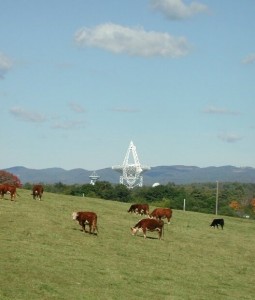 The radio documentary can be streamed on the Radio 4 website. I’ve included links to each episode below. As far as I can tell, there are no expiration dates on the Radio 4 streams:
The radio documentary can be streamed on the Radio 4 website. I’ve included links to each episode below. As far as I can tell, there are no expiration dates on the Radio 4 streams:
- Episode 1: Into the valley
- Episode 2: Keeper of the quiet
- Episode 3: We Are Technological Lepers
- Episode 4: Hunter and the Hunted
- Episode 5: Change Must Come
My wife and I have camped near the NROA site in Green Bank–it’s a beautiful part of the world. I’m certainly long overdue to return!
Again, David, many thanks for sharing this!
BBC Radio 4 Extra: The First Pirate
The First Pirate is the title of a Radio 4 Extra–an interview with Les Woodland who tells the story of Captain Plugge, founder of Radio Normandy, the first station to take on the BBC.
(Source: Southgate ARC)
Capt Leonard Plugge was the driving force behind Radio Normandy in the early 1930s. He created the International Broadcasting Company in 1931 as a commercial rival to the British Broadcasting Corporation by buying airtime from radio stations such as Normandy, Toulouse, Ljubljana, Juan les Pins, Paris, Poste Parisien, Athlone, Barcelona, Madrid and Rome. IBC worked indirectly with Radio Luxembourg until 1936. World War II silenced most of Plugge’s stations between 1939 and 1945.
“Tuning In” Radio 4 documentary on the history of early radio in Britain
Tuning In, a history of early radio in Britain, will be broadcast November 3rd on BBC Radio 4. If you don’t live in the UK, you can listen live on the Radio 4 website where they will also post an archive of the show. (Note that some archived shows are only available for a limited time.)
 (Source: Radio 4)
(Source: Radio 4)
The press fulminated, the enthusiasts were frustrated, and the radio manufacturers fumed. Despite the fact that Marconi had invented radio before Queen Victoria had celebrated her Diamond Jubilee in 1897, radio in Britain took another 25 years to begin an official service to listeners. But when, on November 14th 1922 the British Broadcasting Company’s station at Marconi House radiated to an awaiting nation “This is 2LO calling” for the first time under the company’s name, it marked the start of the first and most distinguished public-service radio station in the world.
As part of the celebrations to mark nine decades of the BBC, historian Dominic Sandbrook explores the long and involved pre-BBC history of radio in Britain, how Britain’s broadcaster got going and developed into an institution dedicated to entertainment, education and information, discovers why Australian diva Dame Nellie Melba was involved, and how the improbably-named Captain Plugge made his first British commercial broadcast from the roof of Selfridges department store in London. From Marconi to Savoy Hill via an old army hut in Essex, the story of the early radio in Britain.

